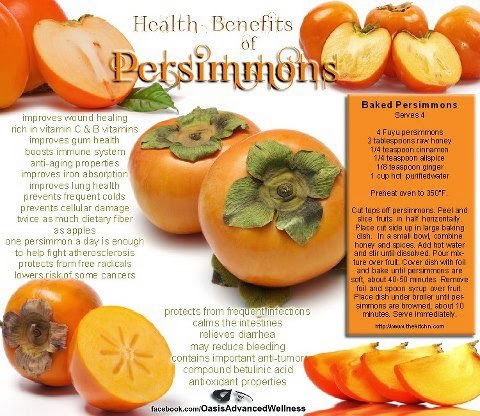
It’s November and the fruit of the month is Persimmon.
So hurray Persimmon season! And that’s probably the only nice thing about wet and windy Novembers.
This strange exotic orange –yellow round tomato looking fruit which almost tastes like a cross over between apples, plums, and date, when you first encounter one you might not be quite sure how you to eat this…what is this…is it a fruit? or perhaps a thing. But one thing you’ll find out pretty quickly: Persimmons bring a bit of sunshine into a cold November day.
The persimmon originated in China, where over two thousand different varieties have been cultivated for centuries. In 1870, the persimmon tree was brought to California and proliferated until 1920. By 1930, California had over 200,000 trees. The two major varieties grown in California today are the Fuyu and the Hachiya

Distinguishing between the Fuyu and the Hachiya
The Fuyu persimmon is known for being light orange when ripe and has a spherical, pumpkin-like shape. They may be eaten raw when firm or soft. The Hachiya persimmon is a deep orange-red when ripe and has an acorn-like shape. It must be jelly soft before eating and is usually used in baked goods.
Health benefits of persimmon fruit
- The fruit is low in calories (provides 70 calories/100g) and fats but is rich source of dietary fiber.
- Persimmons contain health benefiting phyto-nutrients flavonoid poly-phenolic anti-oxidants like catechins and gallocatechins as well as important anti-tumor compound betulinic acid. Catechins are known to have anti-infective, anti-inflammatory and anti-hemorrhagic (prevents bleeding from small blood vessels) properties.
- Fresh persimmons contain anti-oxidant compounds like vitamin-A, beta-carotene, lycopene, lutein, zea-xanthin and cryptoxanthin. Together, these compounds functions as protective scavengers against oxygen-derived free radicals and reactive oxygen species (ROS) that play a role in aging and various disease processes.
- Zea-xanthin, an important dietary carotenoid, selectively absorbed into the retinal macula lutea in the eyes where it is thought to provide antioxidant and protective light-filtering functions; thus, helps prevent “Age-related macular related macular disease”(ARMD) in the elderly.
- They are also a very good source of vitamin-C, another powerful antioxidant (especially native Chinese and American persimmons; provide 80% of DRI). Regular consumption of foods rich in vitamin C helps the body develop resistance against infectious agents and scavenge harmful, pro-inflammatory free radicals.The fruit is good in many valuable B-complex vitamins such as folic acid, pyridoxine (vitamin B-6), thiamin…etc. These vitamins act as co-factors for numerous metabolic enzymatic functions in the body.
- Fresh Persimmon fruits also contain healthy amounts of minerals like potassium, manganese (15% of DRI), copper (12% of DRI), and phosphorus. Manganese is a co-factor for the enzyme, superoxide dismutase, which is a very powerful free radical scavenger. Copper is a co-factor for many vital enzymes, including cytochrome c-oxidase and superoxide dismutase (other minerals function as cofactors for this enzyme are manganese, and zinc). Copper is also required for the production of red blood cells.

But enough of the stats and facts. Persimmons are pure bliss to bite into, but they also work well in smoothies, so you might as well make a meal out of it!
I tried this one:
75g persimmon
50g frozen banana
5 pods of cardamom
1/2 tsp ground cinnamon
25ml almond milk
2 dates
Start by blending the frozen bananas and the almond milk, then add the persimmon, and once this is all smooth, grind the cardamom and add with the cinnamon and the dates.

hi,
most of our family members love to eat persimmons. specially my mother. she also believes that she feels better after eating persimmons while having pain in feet. please help guild me that persimmons can be eaten with it skin or without skin, is better for health.
thanks
It’s my favorite fruit. When it is in season, I always buy by the case. It is so sweet that I think it is the food of the gods.